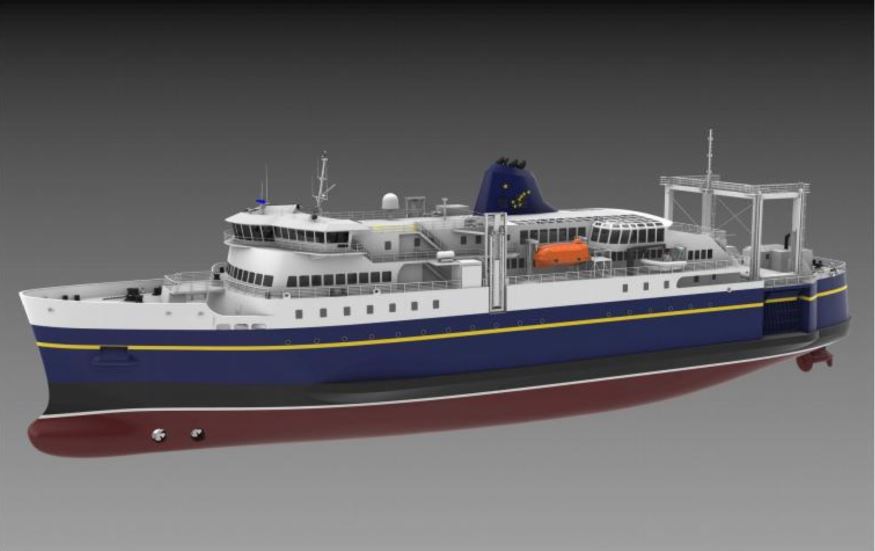
The vessel that eventually replaces the aging state ferry Tustemena is likely to be a battery-powered diesel-electric hybrid. That’s as the Alaska Marine Highway System leverages federal infrastructure funding to green up its fleet.
Greg Jennings, Special Projects Liaison with the state transportation department, told the Alaska Marine Highway Operations Board Friday that the state sees electric propulsion as a big part of the ferry system’s future.
“I would definitely say that there is no way batteries won’t be a part of any future marine transportation environment in the State of Alaska,” Jennings said. “Just because that’s where the industry and the regulations are going. It’s where the funding is going.”
The 300-foot ocean-class ferry Tustumena is nearly six decades old. The plan for its replacement now includes a room for housing batteries with the potential to expand.
Jennings says the decision to install batteries on the vessel opens a lot of doors.
“The beauty of this battery installation is it gives us the flexibility to do a lot of things we couldn’t do before,” he said.
The Tustumena’s two diesel engines currently use about 150 gallons of fuel per hour at cruising speed. Jennings says adding electric power will allow captains to use just one diesel engine at times. He says that’s expected to cut fuel consumption by 1%.
“So if you look year over year, over the lifetime use of the vessel, that’s a major savings to the state,” Jennings said. “One percent may not sound like a lot, but in ship design, you go to immense lengths to get 1% savings, because it’s like every day you operate that vessel that’s 1% you’re saving fuel.”
State transportation officials estimate adding batteries to the vessel would add millions to the new ferry’s estimated $200-$250 million price tag. But Jennings says the state expects to lean on federal money to help pay for it — the federal infrastructure law passed last year includes more than $1 billion in ferry funding.
“With the infrastructure funding that’s available to the state, much of that is very much centered around efficiency and modern technologies,” said Jennings. “And it behooves us to try to make use of that, you know, if we cannot, for some reason funding doesn’t come through, it is not a drastic step to remove the battery from the vessel and just say, you know, we don’t have funding, we’re just not going to do that part of it.”
The state is in conversations with the U.S. Coast Guard and American Bureau of Shipping for what kind of safety measures should be in place for the hybrid ferry.
Jennings says adding battery power to the Tustumena replacement vessel — known as the TRV — will allow the state to learn about the technology and prepare for other projects in the future.
“We’re looking at operating the TRV for the next 50 years, you know, nominally,” Jennings said. “And if we don’t design in some capacity for batterie now, the state’s going to have to pay a much bigger cost in the future to try to fit it into a vessel that wasn’t designed for it. So again, there’s a really big future proofing benefit to this.”
He says adding batteries to the design will not affect the timeline. The new vessel is still scheduled to be ready for service in 2027.
The ferry system is also seeking $46 million in federal grant money for an all-electric ferry to conduct shorter day routes.











